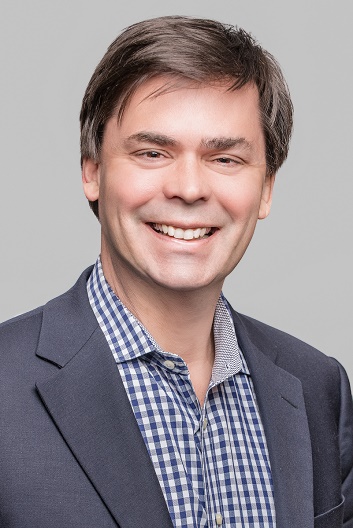Immigration is a highly debated topic with the leading candidates for the 2016 presidential election proposing various strategies to address immigration in the United States.
Physicians take an oath to care for patients regardless of the situation, but many Americans are divided as to whether low-cost health insurance should be granted to undocumented residents. A Mexican woman was recently arrested after presenting false documentation at a Houston clinic, leaving many medical professionals concerned that other undocumented residents will forgo medical care out of fear of deportation. Medical professionals provide their insights on the ways immigration impacts the healthcare industry.
Question: Do you think medical professionals are paying much attention to the recent political debate over immigration? Do you think the debate carries much weight?
Jeffrey Sterling, MD (Sterling Medical Advice & Sterling Initiatives): Practicing physicians don't view patients through political lenses. The medical mantra "do no harm" dictates how we address individual patients without bias in real time.
Ricardo Martinez, MD (North Highland): The population landscape in the United States is constantly evolving in many ways — culturally and generationally. Immigration is a driver of the changing population and healthcare systems need to be prepared to adapt. It cannot be ignored by medical providers and no matter which side of the debate you are on, diverse populations are quickly growing and their healthcare needs are largely underserved.
Fletcher Lance, Consultant (North Highland): As America's population diversifies, more consumers are calling for increased representation across all sectors of business. One of the healthcare industry's biggest challenges is understanding and caring for emerging and diverse patient populations. Providers will be caring for future immigrant generations and health disparities are widely recognized to be a problem. Addressing new populations that have been underserved has the potential to yield simultaneous returns — a societal benefit from improved population health.
Q: How does immigration impact healthcare?
Dr. Richard Martinez: There are many multifactorial ways that immigration has impacted healthcare and one issue is healthcare disparities among minorities. In the United States, everyone legally has the right to seek emergency medical care and it's the responsibility of the healthcare system, especially hospitals, to take all individuals who present for evaluation. We've also realized that there is an underrepresentation of minority healthcare providers — creating even more healthcare disparity. For example, less than 5 percent of physicians are Hispanic.
Additionally, when a patient arrives whose primary language is Spanish, and they don't find any Spanish signage or a setting that embraces their cultural values, this creates fear and mistrust. A few steps to rectify this situation include operating in Hispanic communities, such as in community clinics, and providing specific services to help navigate the system and provide cultural competency and Spanish proficiency for providers and staff. It also calls for greater representation of minority leaders in the healthcare system to address the under representation.
Dr. Jeffrey Sterling: From a public health standpoint, the costs of a blinded treatment policy has staggering ramifications to the system with respect to costs and utilization of resources. It is the ethical conversation that has won out here. Another under-discussed burden on the system is the challenges/needs to treat individuals with language barriers. It's a fascinating challenge.
Muhammad Hanif, MD, (iCliniq): Immigration is the major determinant of new diseases in the modern healthcare systems. Globalization has made this world a single small village where people are so closely interconnected that even a new disease is shared across nations at a blink of eye. Latest examples being Dengue, swine flu/H1N1/bird flu, Kongo virus, plague and many more. Immigrants mostly coming to the United States from countries where there is no immunization concepts and this has ruined the life of many locals here. Definitely local communities are at a greater risk for contracting such preventable illness. The healthcare system has to accommodate such immigrants and it is a burden on economy too.
Mr. Fletcher Lance: There has been a rise in insured population, specifically second generation immigrants, as a result of Patient Affordable Care Act, Medicaid expansion and health exchanges. Healthcare providers were not prepared to meet this increased demand and diverse/minority populations were integrated into programming and care service offerings.
For example, the Hispanic patient population has often been overlooked by healthcare organizations, based on an assessment that there was too little return on investment to justify specific programming. But providers can no longer ignore the demands of this group. However, by 2020, one of five Americans will be of Hispanic origin. This population faces many health risk factors and disease prevalence, while dealing with poor access to health services and difficulty navigating the healthcare system. This creates a healthcare delivery gap that can make it difficult to educate Hispanic patients about preventive care and overall management of their health.
Q: What needs to change in healthcare to meet the needs of the undocumented population?
JS: Culturally sensitive, language capable providers to match the treatment population. The premise of the question of course presumes meeting the needs of the undocumented population is the highest priority, which is quite debatable.
RM: We work with healthcare professionals across the nation and have discussed this issue. We agree that the healthcare system is best designed to provide compassionate care, not as a system to penalize people for reaching out for treatment. Our role as providers is to care for those who need help. We need to move healthcare from reactive to proactive, and that means reaching out to communities to be more effective in improving the nation's overall health.
FL: At the end of the day, providers need to address healthcare disparities as it's a key component of quality. It's to society's benefit to improve population health management, patient safety and overall performance in care delivery – including addressing the immigration population.
There are numerous initiatives that can be implemented to identify and eliminate care disparities, improve patient experience and access to care and educate providers and staff about communicating and caring for diverse patient populations. Providers need to also work on relationship-building as a factor that has led to low trust levels in the Hispanic community has been a lack of cultural competency in many healthcare settings.
Pictured from left to right: Dr. Jeffrey Sterling, Dr. Ricardo Martinez, Mr. Fletcher Lance & Dr. Muhammad Hanif




